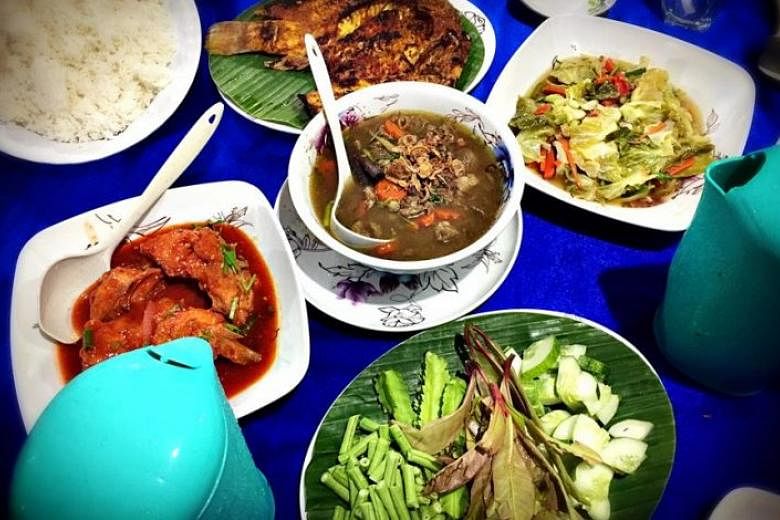PERAK (THE STAR/ASIA NEWS NETWORK) - It is no secret that Malaysians love to eat. It was therefore not a surprise that food was a big part in this media familiarisation trip to Kuala Kangsar, organised by Tourism Malaysia and Destination Perak.
At Perak's royal town, we had the opportunity to taste dishes synonymous with Kuala Kangsar, made the local way, as well as traditional kampung food.
We lunched at Teratak Warisan Kampung, a restaurant that serves traditional Malay kampung food. An array of dishes unique to the area was served, to be eaten with rice. Among them was Gulai Ikan Masak Tempoyak (fish cooked in spicy fermented durian sauce), a yellowish curry-like gravy. If you are a durian lover, you may like it. The dish does not have much of the pungent smell and taste of fresh durians though.
Run by husband-and-wife team Saidi Othman and Zaliah Ibrahim, the restaurant also serves Gulai Siput Sedut Campur Pucuk Paku, a dish of snails and edible ferns cooked in a spicy, creamy gravy. I admit I was hesitant to try this one.
If you are not so adventurous with food, fear not. There are also dishes such as Rendang Ayam (chicken cooked in a thick, spicy paste) and Rendang Udang (prawns cooked in a thick, spicy paste) to suit more conservative palates.
As in most traditional kampung meals, ulam - a traditional salad of raw vegetables served with sambal belacan - was also provided.
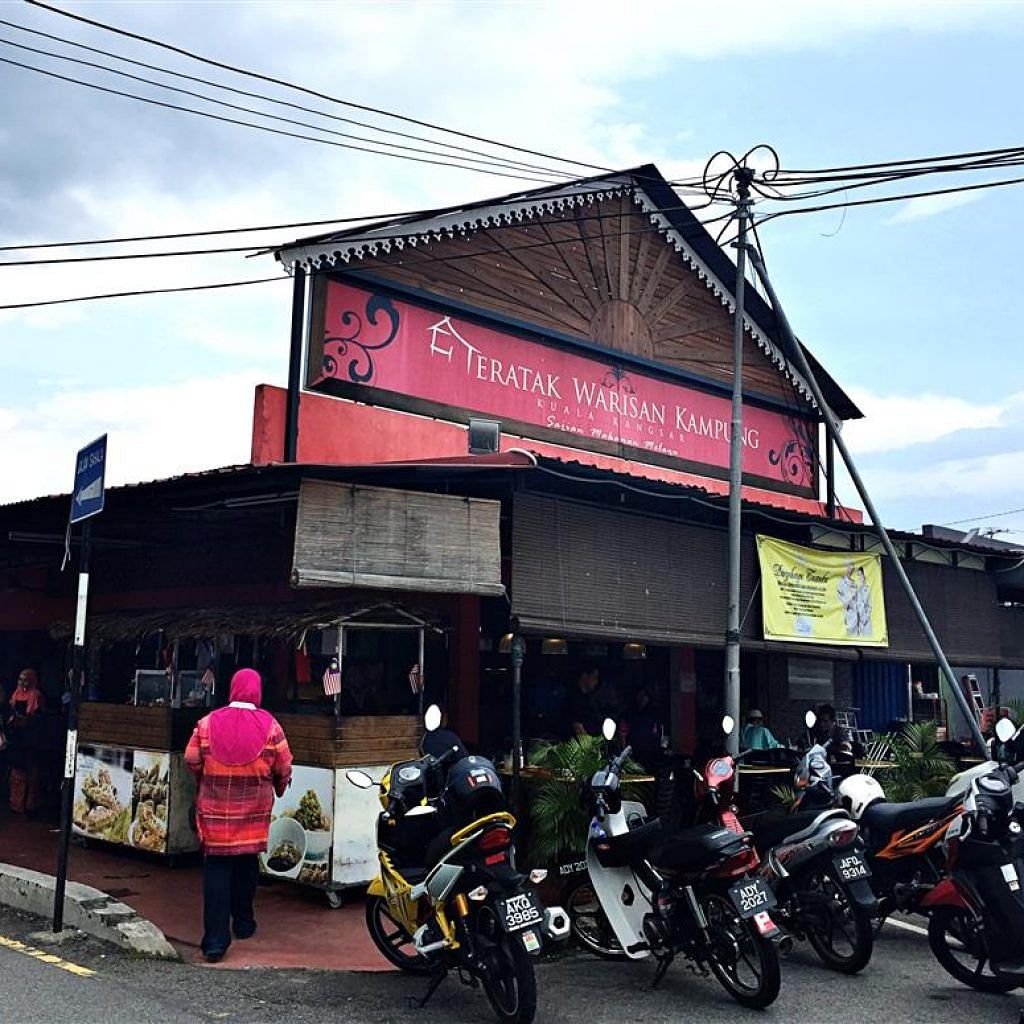
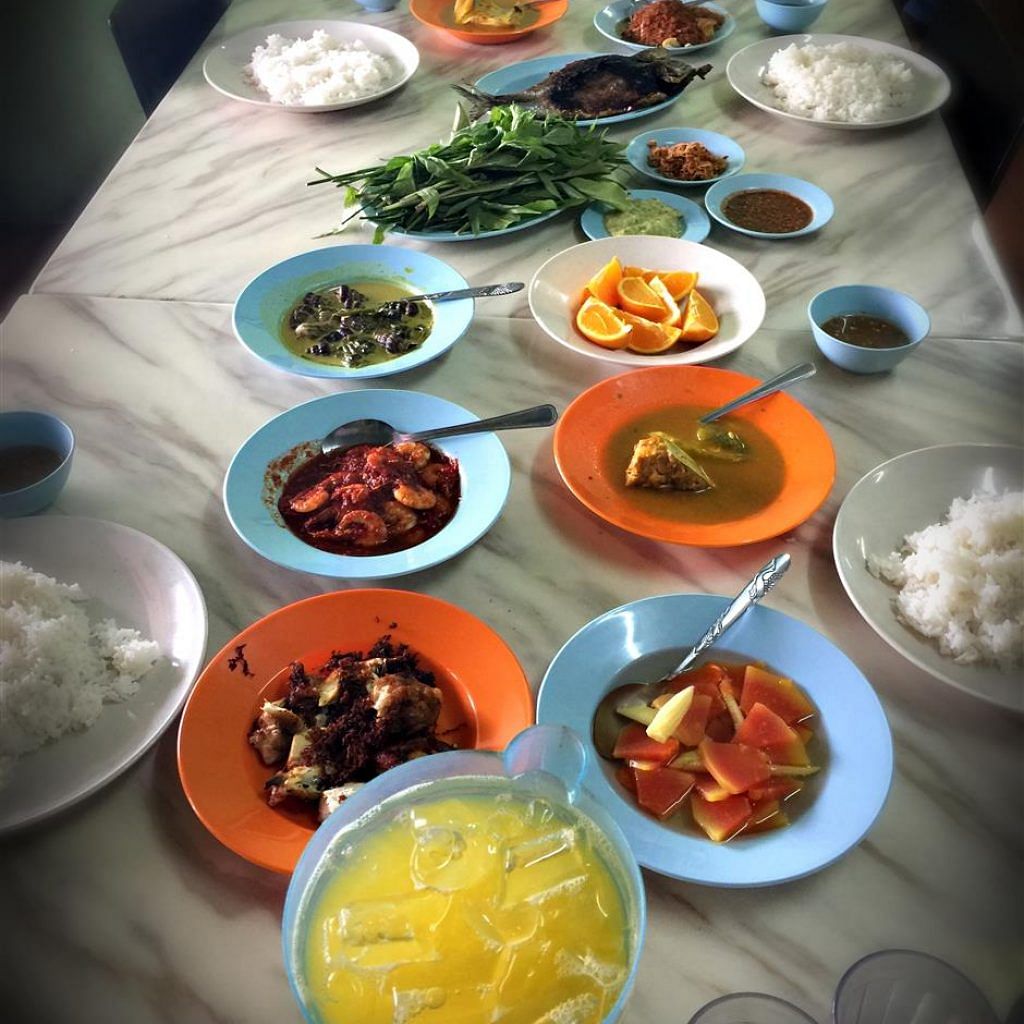
Other dishes the restaurant serves include: Pajeri Terung (eggplant in a spicy sauce); Gulai Lemak Labu (pumpkin curry); Gulai Kemahang (a kind of leafy vegetable curry); Ikan Pari Bakar (grilled stingray); Gulai Ikan Pindang Daun Seniar (fish wrapped in a type of leaf and cooked in curry); Kebebe (a snack made of mashed plant parts, seasoning and spices - usually eaten after meals); and Betik Muda Masak Air (young papaya in clear soup). It also has Nasi Lemuni (rice cooked with lemuni herbs).
Although it is not uncommon for locals to eat with their hands (and many of the participants in our group did), I went with the less adventurous fork-and-spoon option. We washed the food down with refreshing concoctions of Sirap Limau (rose-lime drink), Sirap Selasih (rose-basil seed drink), calamansi or orange juice.
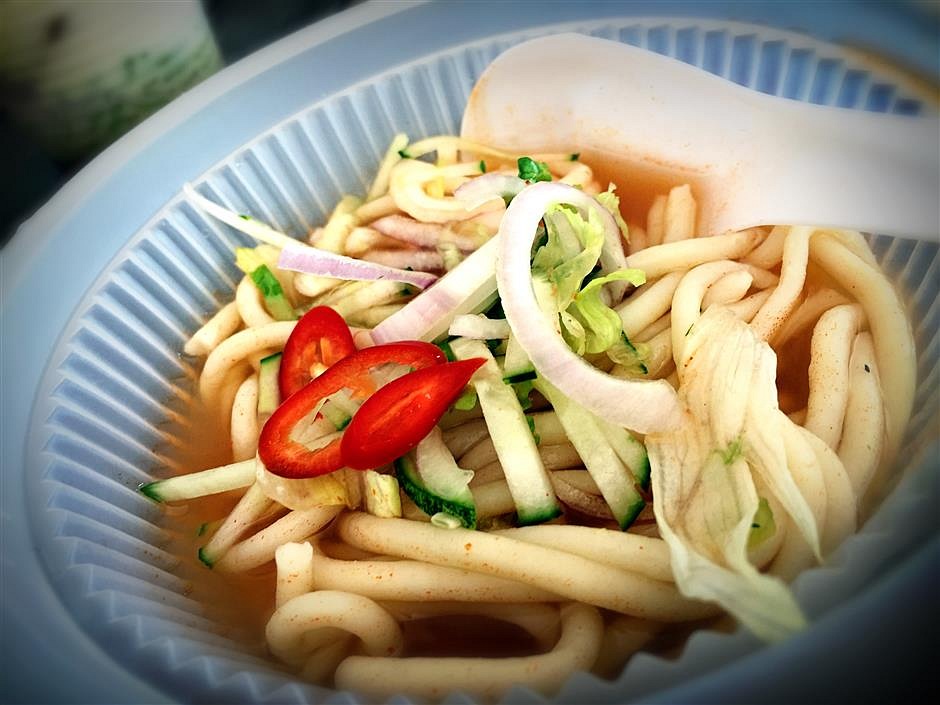
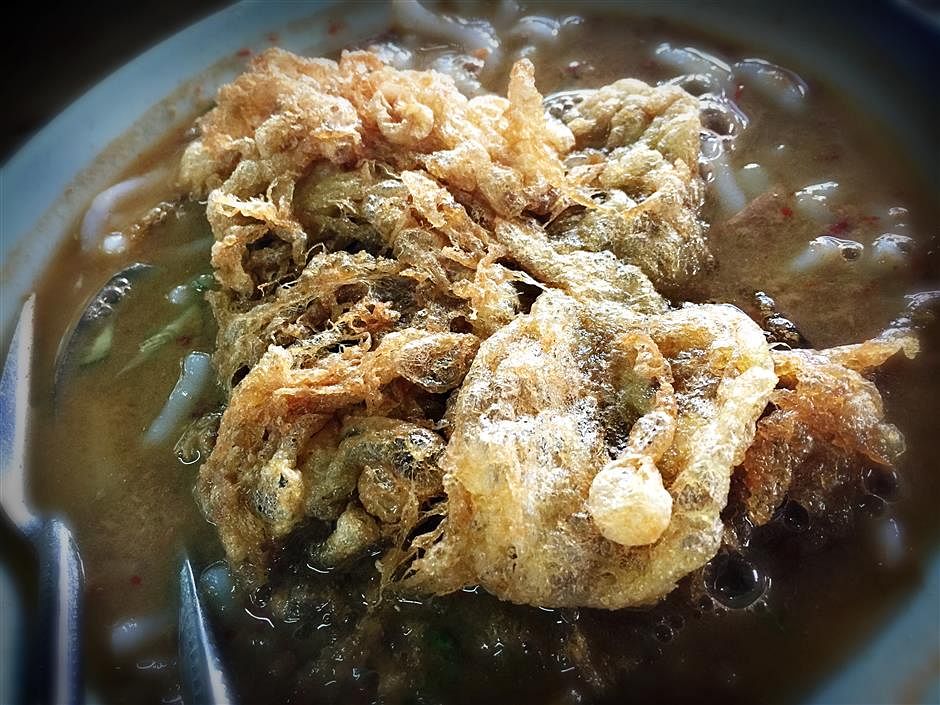
If you are feeling peckish between meals, there is also street food that you can try during teatime. We had the opportunity to sample local desserts such as Cendol and Ais Kacang, as well as Pasembur (rojak) and two different types of laksa at the food stalls near Jeti Dataran Sungei Perak Indah Kuala Kangsar and elsewhere in town.
Laksa Pak Ngah, served from a food truck, is very different from the regular asam laksa or curry laksa. It consists of rice noodles cooked in a clear soup with lots of grated vegetables and red chillies. Laksa Pokok Limau, offered by a stall with a lime tree at the entrance, is similar to asam laksa, but is served with a crispy fried egg.
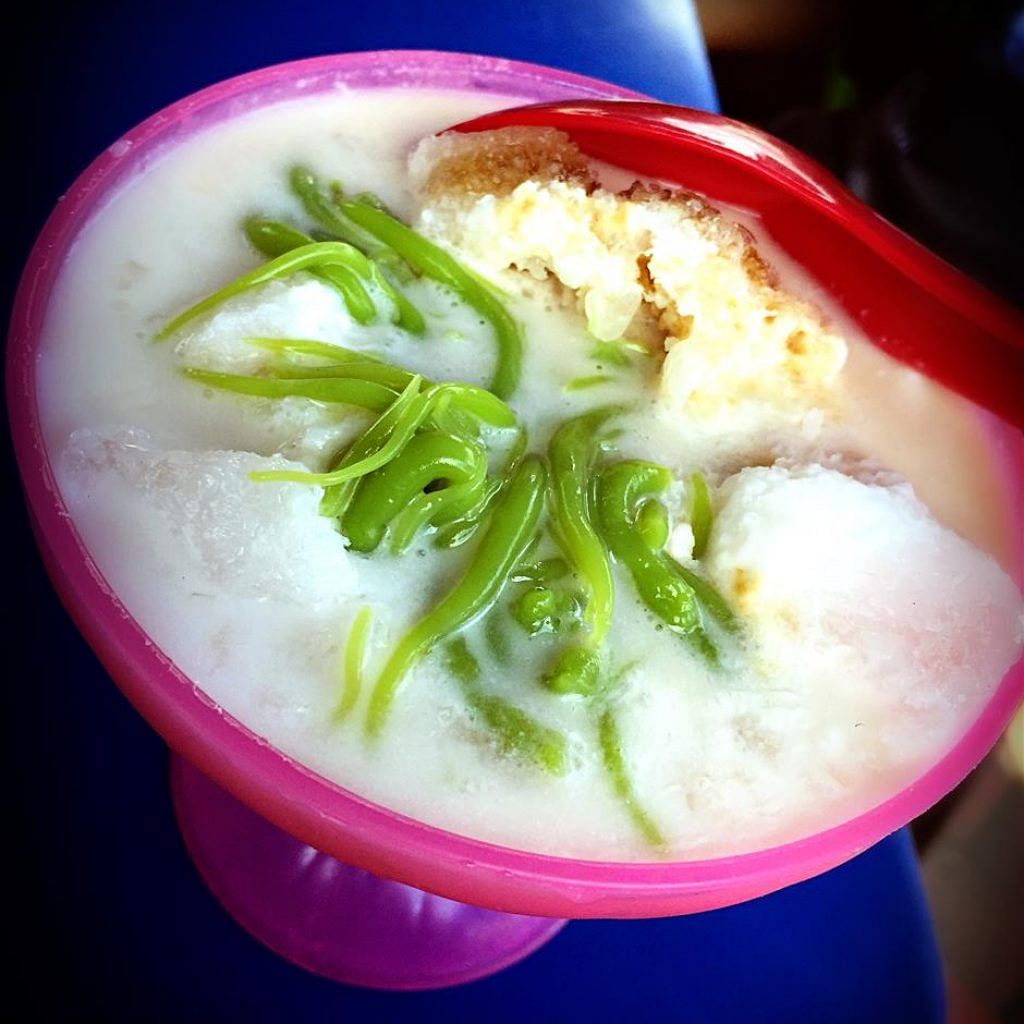

We also had the opportunity to sample Nasi Ganja, packed all the way from Ipoh. It is like Nasi Kandar, but is known as Nasi Ganja to the locals because they say it is addictive - once you have tried it, you would want more.
At dinnertime, the locals proved that they really know how to feast. Elaborate local barbecue dishes such as Ikan Bakar (grilled fish) and Kambing Bakar (roast lamb) were prepared, as well as other local fare such as Sup Ekor (oxtail soup).
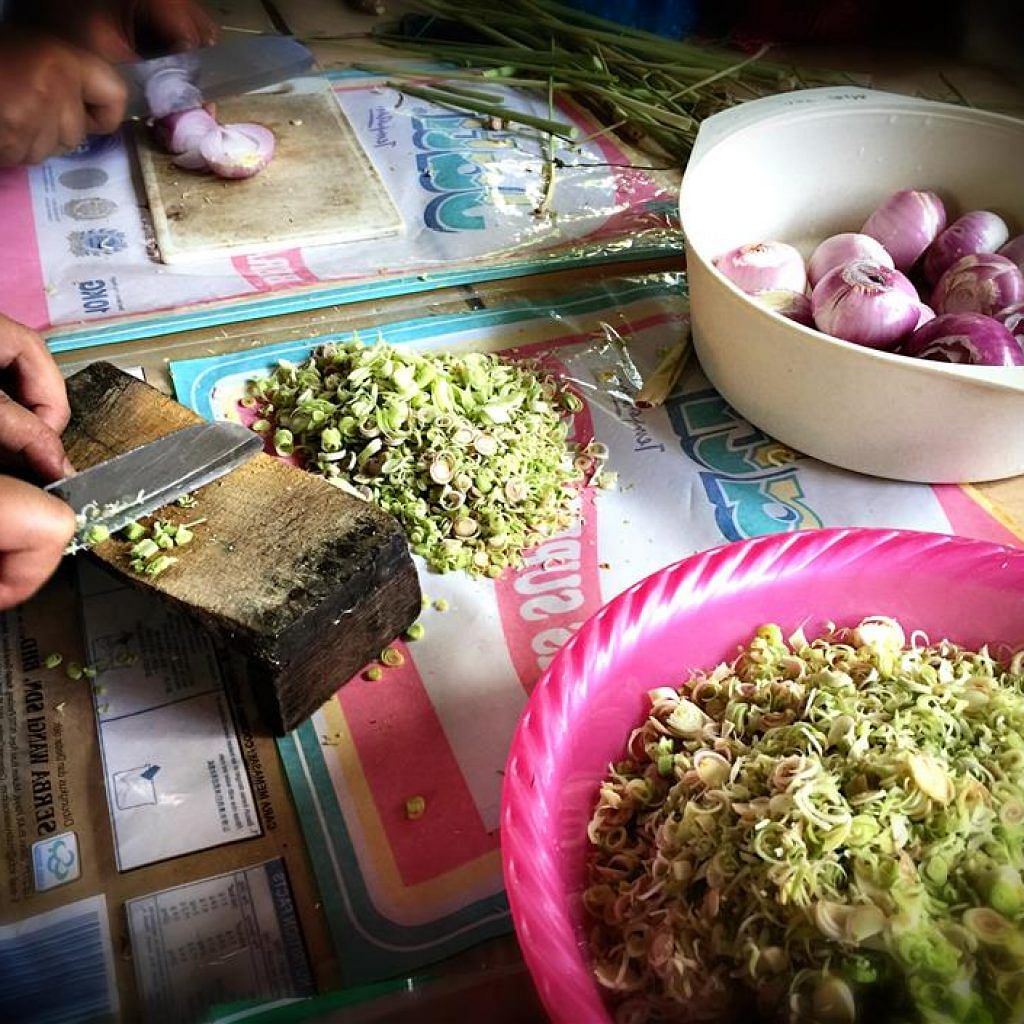
-
 The ingredients for Pucuk Paku Masak Rendang mixed together.
The ingredients for Pucuk Paku Masak Rendang mixed together.
If you love to eat outdoors, you would enjoy a visit to Kampung Labu Kubong, which is less than 20km north of Kuala Kangsar.
Imagine sitting on a mat spread out on a grassy slope in front of a padi field, tucking into traditional kampung dishes. Eating under the sky or shady trees always seems to make food taste better. But what is even more special is that we got to forage for some of the vegetables, such as paku pakis (ferns), learn how to prepare the ingredients and, finally, cook the dishes.
In that outdoor setting, we savoured these dishes: Sayur Kemahang Masak Lemak (vegetables cooked in a creamy, spicy gravy); Gulai Patin Masak Tempoyak (patin fish cooked in spicy fermented durian sauce); Pucuk Paku Masak Rendang (edible fern cooked in dry spices); one of my favourites - Ikan Pekasam Goreng (freshwater fish fermented in salt, toasted rice grains; Asam Keping, stir-fried with chillies and onions); and Sambal Kelapa (coconut cooked in dry spices).

-
 Ikan Pekasam Goreng fried with onions and chillies.
Ikan Pekasam Goreng fried with onions and chillies. -
 Some of the vegetables for ulam (traditional Malay salad).
Some of the vegetables for ulam (traditional Malay salad).
